P-40 on the Soviet front
Fighters of the P-40 family were the first combat aircraft delivered by the United States to the USSR under the military assistance program.
When Germany attacked the USSR, and Great Britain, through the mouth of Prime Minister Churchill, declared her readiness to provide military assistance, the question arose of choosing the types of aircraft for delivery to our country. On July 18, the Soviet ambassador addressed the British government on this issue. Two days later, the ministry aviation decided to allocate 200 "Tomahokov". This number included both fighter jets already flown to England and those still in the United States. The choice fell on these aircraft for the following reasons: fighters of this type were not used by the British Air Force in Europe, they were also preparing to withdraw from service units operating in the Middle East. In addition, they were American planes and, therefore, the British were not responsible for the quality of the machines and the provision of their spare parts. On July 25, Churchill notified Stalin in a letter of this decision. As you can see, the British tried to send us primarily what they considered not necessary and of little value to themselves.
A day before, the United States notified our ambassador Umansky that they were soon ready to hand over "at least P-40 squadron". And in the official documents delivered to the Soviet Union by Harriman, the specific number of 900 machines already provided by June 1942 was already indicated. The same number was included in the Moscow protocol on deliveries.
September 1 The British naval convoy that arrived in Arkhangelsk delivered the first 1941 aircraft, the Hurricane and Tomahawk, from England. Since October, the shipment of "Tomahawks" from America began. By the end of November, the Americans sent 48 machines. Among them is a batch of 39 P-20 and one P-40C. By the end of December, 40 fighters had already been delivered from America. And by the end of the year 76 "Tomahoki" passed through our military acceptance.
The first to master the American machines 126 th Fighter Wing, which began the combat work of October 12. Acting on the Western and Kalinin fronts, this air regiment covered the troops defending Moscow. In one month of fighting, his pilots made 685 combat missions on Tomahawks, and destroyed the enemy's 17 aircraft. Senior Lieutenant S.G. Ridny became the Hero of the Soviet Union precisely for victories accomplished on P-40.
Somewhat later, in November, on the Leningrad front, the 154 air regiment mastered the Tomahawk. On October 28, he received 20 fighter kits, which were assembled and on November 26 made a combat mission. In December, the P-40 159 regiment was re-armed, and by February 1942 of the year - 196. All of these aviation regiments were part of the Eastern Task Force, which was responsible for covering the transport aircraft that had been transferring cargo to the besieged Leningrad.
On the navy the first to start these fighters were the North Sea. 20 Tomahokov IIB received the Second Guards IAP at the Vaenga airfield. By November 1941, at one of the Tomahokov IIB, a test program was conducted at the Air Force Research Institute. The pilots who managed to get acquainted with the American fighter rated it generally better than the Hurricane, but they are all unanimous that the Tomahawk is seriously inferior to modern domestic and German fighters. Bulky, especially against the background of the miniature I-16 and I-153, he had mediocre data on all characteristics. Insufficient speed, lethargy on a vertical maneuver characterized him far from the best way.
Naturally, the pilots also noted the positive qualities of the overseas car - a comfortable cabin with an excellent view, a plexiglass flashlight with good transparency and an emergency reset mechanism. Armament was also positively evaluated at that time, because the second volley of "Tomahawk IIB" was almost twice as heavy as the machine gun versions of the MiG-3. To the greatest extent, the P-40 differed from other fighter aircraft used in our Air Force by a significant range of flight that reached 1100 km. Engine "Allison" at low speed and lean mixture had a good economy, and "Tomahawk" could be in the air for a long time. She also received a positive assessment of the strength of the airframe and good pilot protection - armored glass on Soviet fighters was then still rare. It was also important that the P-40, due to its good stability and “courtesy” in flight, turned out to be quite accessible to a pilot of average skill. For example, Major N. Khramov, an aircraft inspector, literally after a few hours of getting acquainted with Tomahawk flew on it and performed a series of aerobatics during the flight.
But with the technical operation of "Tomahawk" our technicians had a lot of trouble. Electrical generators failed (gears and liners broke), and they had to be replaced by Soviet HS-650. It is worth noting that this defect was discovered during the testing period in the United States, so the American manufacturers were not surprised when they received a request from us at the beginning of 1942 for the 300 spare electric generators. Many problems were associated with engines. In the engine "Allison" V-1710 bearings were installed, having inserts of lead-silver alloy. These bearings worked well at high speeds and heavy loads, but were sensitive to the quality of the oil and the dust that entered it, and they also required careful and long adjustment during installation.
In addition, "Allison" had several short-term afterburner modes, which had to be used very competently. Otherwise, the oil began to overheat, the bearings melted and jammed, the connecting rods broke off, which led to accidents. Often there were fires due to defects in the oil system.
The engines on Tomahawks were initially developed in front-line conditions no more than 35-40% of the resource, this is by the way about American quality and reliability, and especially about guarantees. Regularly there was a shortage of spare parts. It was hard for “Tomahawk” Russian winter; overseas fighters were completely adapted to it. In cold weather, the cells of the oil radiators were torn (sometimes even in flight). From the 154-IAP reported: "On the night of December 5 1941, when the cold minus 26 degrees, 9 oil radiators burst, despite the fact that the heating was carried out every 1,5-2 hours." In winter, there were problems with the landing gear. The wheel chambers burst from the cold, the hydraulic mixture thickened, which made it difficult to release the chassis. With this tried to fight in various ways. After the departures, they began to drain the oil into the night; for this, we had to install drain valves. Foreign slurries and antifreeze replaced by Soviet, more cold-resistant.
By April, 1942, due to the lack of spare engines, many “Tomahawk" got "stuck." To remedy the situation, the commander of the 154-IAP A. Matveev and Colonel-Engineer P. Malikov suggested reworking the "Tomahok" under domestic M-105P and M-105Р engines. Parts that were found at the evacuated aircraft plant No. XXUMX in Leningrad, where the LaGG-23 was manufactured, went to manufacture new motor units. The Soviet M-3 was distinguished by high specific indicators, so with comparable power it was smaller in size and lighter than the V-105. This allowed to place it under the hood without any problems. Compared with the standard motor M-1710 shifted up. The aircraft was equipped with a domestic propeller VISH-105P. Since his cook was also smaller than the original, we had to install an adapter ring. The exhaust system was taken entirely from the LaGG-61. The aircraft was reworked on the 3 aircraft assembly base. These machines (in the amount of more than 1 pieces) on the Leningrad front received the 40-th IAP. For assault strikes, a part of "Tomahoki" was equipped with four guides for PC-196 rockets.
Deliveries of "Tomahok" went to our country in the first half of 1942 of the year, albeit in much smaller volumes, in total in the number of 17 machines. The planes supplied earlier went to the replenishment of the front regiments, and to recruit new aviation units. In January, they armed one squadron of the 20 Guards Aviation Regiment, and later - the entire 964 th regiment. By December, the 1942 of the year at the forefront of "Tomahawk" was no longer used, but in the rear units they still continued to fly. In particular, in the air defense system, almost to the very end of the war, there were 27 machines.
The first "Kittihok" we also got from the British. At the end of the 1941 th 14 first fighter aircraft of the new modification arrived in Arkhangelsk. Initially, all deliveries went through the northern seaports. They also began to use them in the northern sectors of the Eastern Front. The first Kittihokas were handed over to the air regiments that already had operating experience of the Р-40 - 126 and 154. However, the Kittihokov went more than the Tomahoki, and they began to arrive in service with the new units. In the spring, these vehicles received several squadrons - the 19 and 20 of the Guards air regiments of the 258 air division, which fought on the Karelian front. The first 15 of May entered into the battle with Kittyhok 19-IAP. Almost at the same period, these fighters received in the 122-th Air Defense Division, which was previously equipped exclusively with Hurricanes.
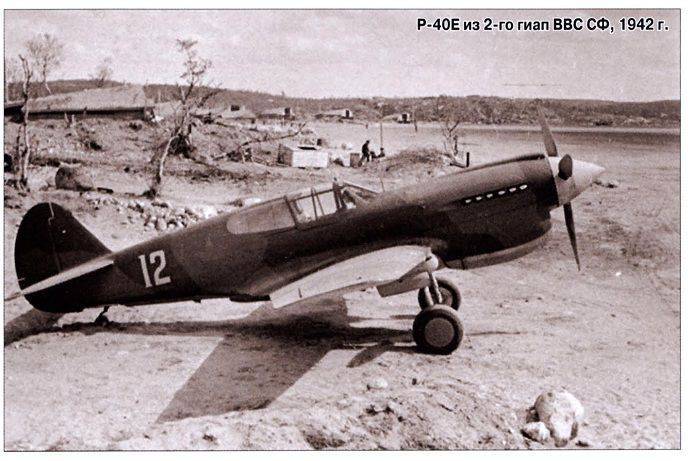
Since in the West, as already mentioned in previous articles, the P-40 was used mostly as an attack aircraft and a fighter-bomber, the development of the machine was carried out precisely in that direction. The aircraft reinforced armor, introduced a bomb suspension, increased speed and range, including through the use of more powerful engines. All this caused an increase in the weight of the fighter and markedly worsened the climb and maneuverability, reduced the practical ceiling, and increased the length of the takeoff run on the takeoff run. All of this was quite clearly revealed in July of the 1942 in the course of testing by the Air Force Scientific Research Institute.
Meanwhile, more and more fighters have arrived. Since the summer of 1942, the Kittihokas began to be driven across Iran. Since autumn, they went to the ALSIB. True, according to ALSIB P-40, the whole 43 came, and all of them were modifications "K". This option differed more powerful engine "Allison" V-1710-73. In the later series, these machines received an elongated tail section of the fuselage. Following the “K” modification, the P-40M began to come in with the V-1710-81 engines, which made it possible to slightly increase the maximum speed and rate of climb. This option was made in the USA exclusively for export deliveries. The latest serial modification in this extensive family was the P-40N. This was the last attempt to improve the fighter without making fundamental changes in the spent structure. These aircraft are also in considerable volume in our country. In total, 1942, the USSR, adopted the 487 Kittyhock.
In November, they were partially equipped with the 2-th Guards Air Regiment of the air forces of the Northern Fleet. A little later, they entered the 46-th IAP on the North-Western Front. The regiment conducted battles over the Demyansk corridor, preventing the provision of supplies to the surrounded 16 German army. In February, one of the squadrons of the 1943 reg. Dzusova.
In the 1943 year, the Kittihocks put even more in the USSR - 940 instances naturally increased and the number of aviation units and connections equipped with them. At various times on the "Kittyhok" fought more than twenty regiments. Since 1943, most of the P-40 arriving in the country have been sent to the air defense system. This was due to the desire to use the positive qualities of this fighter - powerful enough weapons (despite the fact that the Kittyhok was slightly inferior to the German FW-190А-3 and the British Spitfire VС by the mass of the second salvo, it nevertheless exceeded the German Bf- 109F, and the American P-39D), greater flight range and the possibility of long-term locking, survivability, good (compared with Soviet machines) instrumentation. That is why the main directions of its use have become the provision of air defense of cities and other important objects, cover for bombers and torpedo bombers, as well as independent bombing and assault strikes, and conducting aerial reconnaissance. The attitude of the Soviet pilots to Kittihok was twofold. On the one hand, the pilots put him above the Hurricane, and on the other, noted his weak capabilities in conducting air combat.
Here is the opinion of V.M. Perov, who worked at ALSIB during the war: “Our combat pilots liked its spacious cabin, which had a good rear view and good navigation equipment. In general, this aircraft was a mediocre machine, heavily weighted”. B. Veselovsky, who served in the 46 air regiment, in his memoirs wrote: “Our” kitti “was sensitively inferior to“ Messers. ”They had less speed and had much more weight, which made it difficult to conduct battle on verticals. turns ... "
Kittyhok, not very suitable for air battles with enemy fighters, was effective in combating enemy bombers due to its good speed and powerful weapons. At heights greater than 4500, the Kittyhawk overtook our Yak-1, although the Allison V-1710 engine was considered low-altitude for the Western Front. And most importantly, the P-40 in cruise mode could long be patrolling in the sky over the protected object. The Kittihok had two major drawbacks for performing the functions of an interceptor - a small practical ceiling and a low climb rate. Despite this, it was actively used both day and night. There were no special devices for detecting targets at night at Kittihok, so it was problematic to conduct an independent search for targets in the absence of visibility, and the available navigation equipment made it difficult to execute commands coming from a ground-based guidance station due to orientation problems. These shortcomings were particularly clearly manifested during the Nazi air raid on the US base in the city of Mirgorod in the summer of 1944. The fighters of the 310 Air Defense Division, raised in alarm into the air, could not find a single German bomber in a moonless night.
But sometimes these fighters still worked at night quite successfully. For target lighting, each Kittyhock carried one SAB-50 lighting bomb. They flew in pairs - one illuminates the target, setting above it, the other attacks. On the night of March 13, 1943, eight fighters patrolled on the approaches to Murmansk. In the light of a falling bomb, Junior Lieutenant Boky attacked Ju-88; a bomber fell near the lake Kod-Yavr. In some parts of the air defense there were also special aircraft illuminators. They took six SAB-100 bombs under the wings and dropped them one by one, highlighting targets for the strike group below.
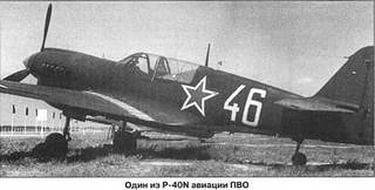
To facilitate navigation at night or with insufficient visibility, some P-40s were equipped with RPK-10 radio-industrial compasses. Its frame was located on the gargrote behind the pilot's cabin. Thus, in the 309 air defense regiment at the end of the summer of 1944, there were about a third of the Kittiocs in the radio semi-compass. From the beginning of the 1944 of the year, when a sufficiently developed network of radar surveillance already existed, a “friend-foe” MF-1 radio responder began to be mounted on them. By the end of 1944, there were more than Kittyhocks 900 in the air defense system. By the time Germany surrendered, six regiments flew on them, and in some others there were one or two Kittyhokas.
The long duration of the P-40 flight also attracted naval aviation. As already mentioned, there the first aircraft of this type in the spring of 1942 were transferred to the 2 th Guards Air Regiment of the Northern Fleet Air Force. They were mainly used to cover the convoys. By summer, the sailors got 27 machines, over the next year - another 21. This was enough only to compensate for the losses. But since the fall of the 1943, the P-40 arrived in the hundreds. From 1943, Curtiss fighters began to be used in the Black Sea Fleet. They were partly staffed 7 th and 62 th regiment. By the end of 1943, they already flew a dozen P-40Ks. At the same time, the composition of these air regiments was rather heterogeneous in them, besides the P-40 there were also E-15 of various modifications, and Spitfire VВ, and LaGG-3.
On the Black Sea, the combat work of American fighters began with providing air cover for the Caucasus coast, near the town of Gagra. 22 April 1943 of the Kittihok took part in the reflection of the massive raid on Poti carried out by the Germans. The 25-27 of June regiment airplanes covered the passage of the tanker "Joseph Stalin" from Batumi to Tuapse and back. 26 June German aircraft made an attempt to sink the tanker, but to no avail. 20 August 1944, they covered our bombers and attack aircraft during the bombing of Constanti.
In the Northern Fleet, Kittyhokas were actively used as fighter-bombers. The load from one FAB-250 on the ventral suspension was considered to be standard for these machines, but often our pilot took both FAB-500 and various combinations of FAB-250 and FAB-100. 10 May 1944 of the year "Kittihok", in the two groups, without a loss otbombili on airfields Hebugtepte and Solmijärvi. The 13-14 raids of the 78 and 27 air regiments on Kirkenes were no less successful in May. The fighters in these raids acted as dive bombers. One FAB-100 hit the vessel with a displacement of at least 6000 tons. The second transport, a smaller one, also received a direct hit and ran aground. The next day, "Kittyhok" began to use top mast bombing. One vehicle was struck and caught fire, another one was seriously damaged, blasts hit and one coaster. It is worth noting that the results of the Kittichok bombing turned out to be even better than the IL-4 bombers that took part in the raid. For two days of active combat work, only one North Sea "Kittihok" was shot down.
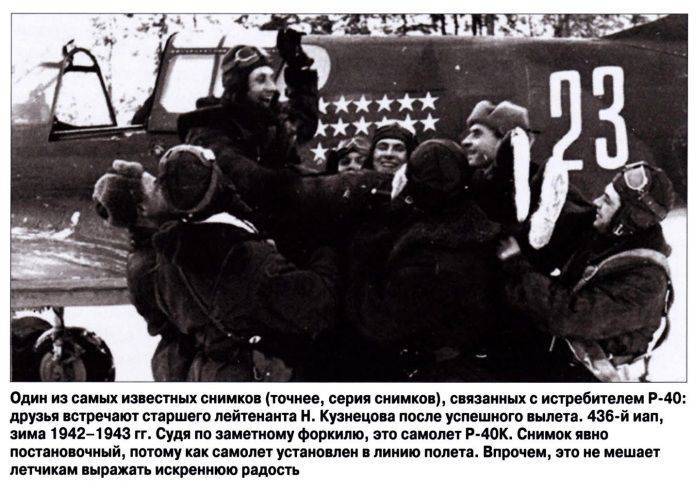
Tactics topmachtovikov repeatedly used further. So, for one day on October 11, a group of fighters Captain Strelnikov from the 78 regiment destroyed two barges and five more motoboats. During the fighting near Petsamo, the P-40 forces of only one squadron of this air regiment managed to sink the 13 ships. At the same time, on average, for the destruction of one ship "Kittihok" - mastheads spent from two to five FAB-250. This is a significantly better result compared to conventional bombing. However, the top mast bombing itself was quite dangerous for the fighter itself. The plane was supposed to fly at altitudes of the order of 20 meters. So, for example, Pilot Prohavko, who was late with a cuff, hooked the fighter to the mast of a minesweeper, snatching out a third of the wing of the plane with an aileron, but was able to reach the base on a damaged car.
By the way, taking into account the positive experience of using Kittyhok as a strike aircraft, in the summer of 1944, in the aircraft repair workshop, a two-seat P-40 was made in a special version of a light bomber. In the rear cockpit equipped workplace navigator-scorer, equipped with a bomb sight. However, this machine has not received further development. Sailors tried to use Kittyhok and to search for enemy submarines. We flew in pairs at low altitude. Fighters did not find a single submarine, which is quite predictable given the high speed of flight and a limited view down.
P-40 with bombs used on land. Sometimes the assault capabilities of the Kittihawk were increased by hanging under the wing surfaces of a pair of PC-82 rockets, similarly applied on Tomahawk.
The Curtiss fighters, with AFA-I aerial cameras installed in the fuselage, were used as photo reconnaissance aircraft. These machines were operated on a separate reconnaissance aircraft 118, where they were ultimately recognized as the most suitable for photo reconnaissance. By the end of the 1944, they completely supplanted other machines, such as: Hurricane, P-39, Yak-1 and LaGG-3.
1943 led active operations in the 30 reconnaissance regiment of the 3 squadron, which received seven P-40Ks. Her planes from the Bugaz airfield independently conducted reconnaissance over land and sea, and also provided cover for the Bostons of the same regiment flying from Myskhako. So, with their participation in July 1943, our command was able to receive simultaneous photo reports immediately on the 29 ports of the Black and Azov Seas. And it took just four hours.
1-I aircraft assembly in Leningrad in the year 1942 converted R-40E under the domestic engines M-105P and M-105Р. More than 40 machines underwent such alteration. This measure was forced, there was an acute shortage of spare parts and motors. The characteristics of the converted aircraft decreased slightly compared to the standard machine. So, the maximum ground speed fell from 477 to 465 km / h. All of these fighters entered the 196-oh air regiment operating over Ladoga.
Double "Sparky" were also made for the retraining and training of flight personnel. They were made in different places in different ways - with open or closed cabins, using separate nodes from domestic training fighter jets. Sometimes these machines are designated P-40UCH.
P-40 did not take part in hostilities against Japan. There were only two vehicles in the Pacific Fleet Air Force, arriving in June 1945 from the Northern Fleet 27 regiment. They were used as training.
In operation, "Kittihok" demonstrated their good and bad sides. A positive feature of all P-40 modifications was durability and high survivability. This is proved by the many successful air rammers that were made by our pilots. The first ram on the Р-40 "Tomahawk" was made by 20 on January 1942 of the year, pilot V.А. Chirkov from the 154 air regiment. In March, 1943, two "Kittihok" from 768-IAP fought with 12-th Bf-109. During this battle, Lieutenant V. Nikolaev rammed an enemy fighter and jumped out with a parachute. And the Hero of the Soviet Union, A.S. Khlobystov on P-40 made three rams. Moreover, he executed two of them in one battle, and hit enemy planes with the same right plane. After the battle, Khlobystov safely led the plane to his airfield.
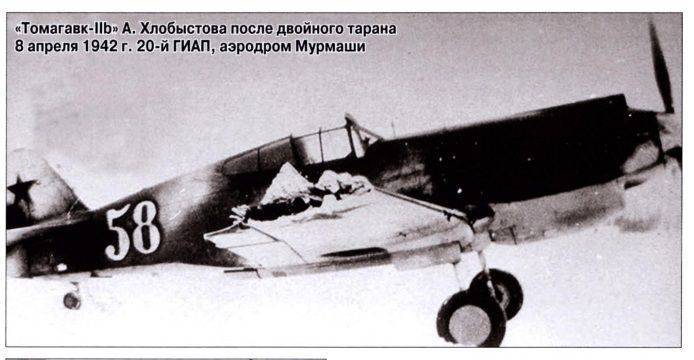
Kittihok inherited a portion of the operational flaws from Tomahawk, mainly related to the propeller motor group. Motors "Allison" is often refused because of the "chips in the oil." For example, in the fall of the 1942-th in the 436-m air regiment, 16 fighters failed in a short time. A third of the engines failed with the order of the entire 30 hours. However, gradually accumulated experience of servicing overseas engines, allowed to correct the situation. The use of high-quality oils, careful and long-term adjustment after repair, strict adherence to the regulations and the use of optimal modes in flight, gradually leveled the problem with the engine life. Although it complicated ground training. American cars required a lot of time for ground staff and caused some difficulties for the supply services. The title of a simple and reliable machine, against the background of Jacob and Lavochkin, P-40 could not deserve it.
The production of the P-40 family of aircraft in the United States ceased in 1944. In the same year ended their delivery to the Soviet Union. According to the Soviet data, in total, it was adopted for the Air Force and Air Defense 247 "Tomahoki" and 1887 "Kittihok". To this must be added naval aviation. She received the 311 aircraft of the Curtiss P-40 family, of which there are about 90% "Kittyhocks" of various modifications. According to other sources, along with the equipment transferred from the Red Army Air Force units, the 321 aircraft entered the fleet. Of these, 211 fought not the north, 109 - on the Black measure.
According to American reports, it turns out that the entire Soviet side accepted 2097 P-40. The rest is the re-export of "Tomahawks" from the UK, plus faulty machines sent by the British to spare parts. The exact breakdown by modifications is not known, one can only say that among the shipped from the USA were 313 Р-40К, 220 Р-40М and 980 Р-40К. On the P-40, as on any other machines, our pilots bravely fought with the enemy. For example, Major Naidenko until May 1942 of the year on Tomahawk, and then on Kittyhok shot down 16 of German planes and became Hero of the Soviet Union. He was not the only one. The title of Hero twice earned PA Pokryshev from the 154 regiment, in which besides him there were more than a dozen pilots who were awarded this honorary title, including the mentioned V.A. Chirkova. In March 1945, the sea pilot Captain Strelnikov, the master of top mast attacks, became a hero of the Soviet Union. The famous North Sea ace BF flew on Kittyhock and died on it. Safonov. This list goes on and on. The most weighty score of victories on the P-40 was possessed by Captain S.M. Newbies from the 67 Guards Fighter Regiment. He shot down on this machine 19 German aircraft. It is noteworthy that none of the allies who fought on these fighters won so many victories as, for example, Novice, Khlobystov and other Soviet pilots.
Kittihokas and the few remaining Tomahawks after the war began to be removed from service since the 1946 year. The last machines used as training ones survived to the end of the 40s.
At present, only one Kittihok is preserved, which is in the collection of the Museum of the Air Force of the Northern Fleet.
Sources:
Kotelnikov V. Leiko O. Fighter Р-40 // Digest "Wings". No.2. C. 9-24.
Kotlobovsky A. "Donkey Hawks" of Berlin // Aviation and Time. 2000. No.3. C. 35-39
Firsov A. US Fighters // Aviation Collection. No.14. C. 1-4.
Ivanov S. Curtiss P-40 // War in the air. No.52. C.1-17, 43-50.
Morozov V. P-40 with red stars // Aviation and Cosmonautics. 2015. No.6. C. 24-29.
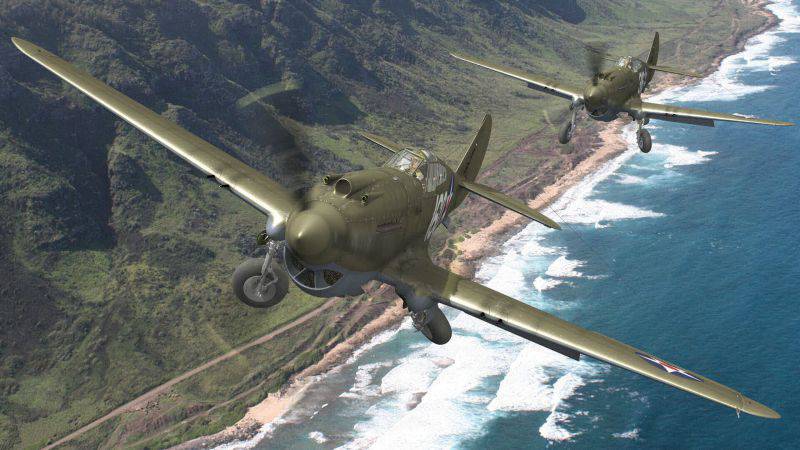
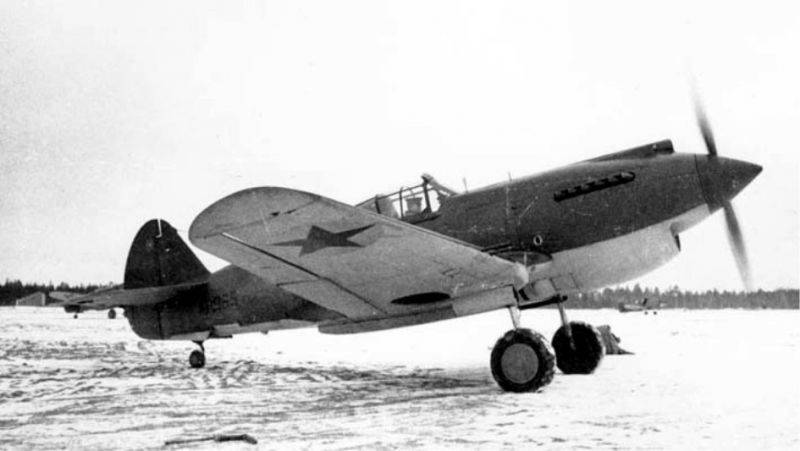
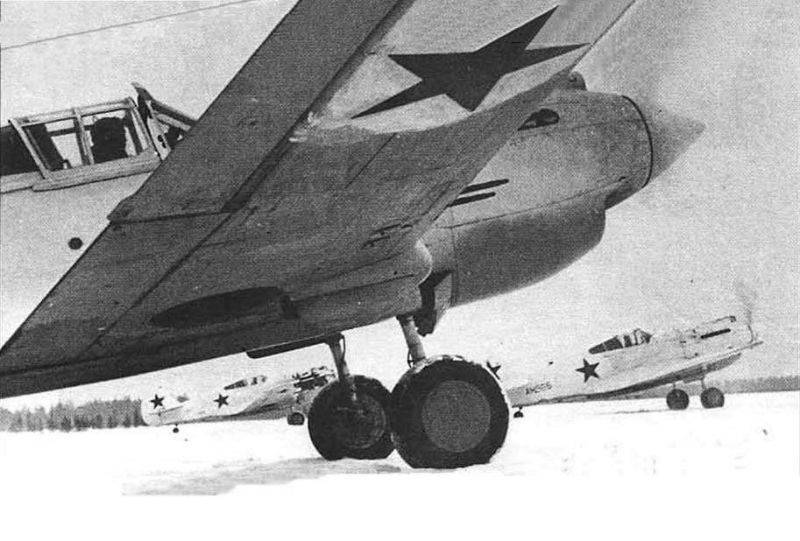
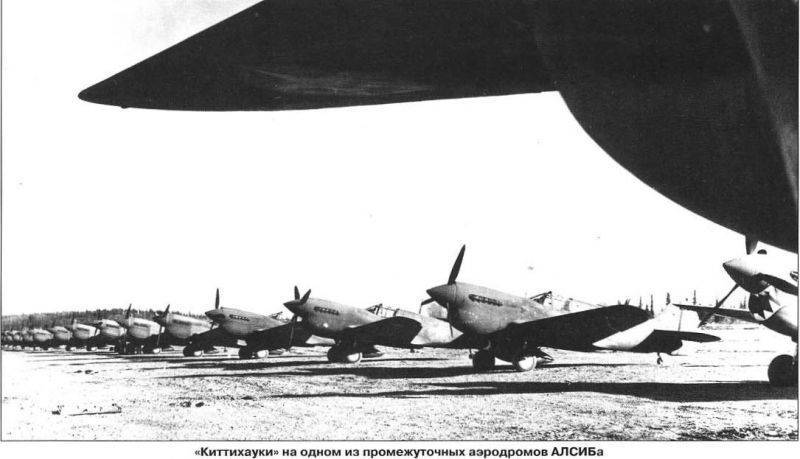
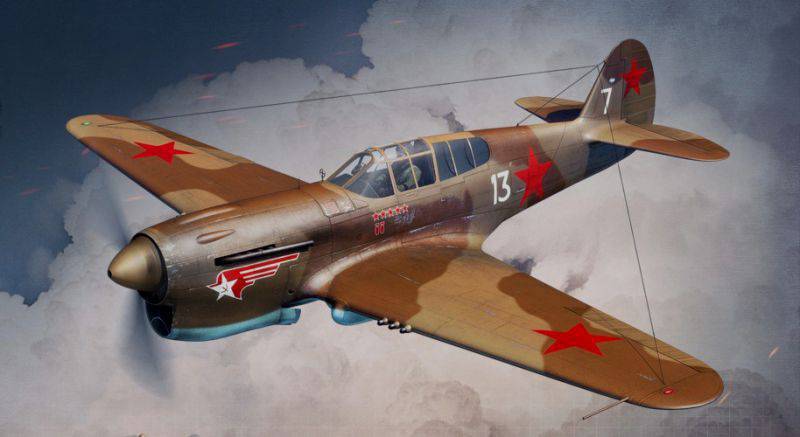
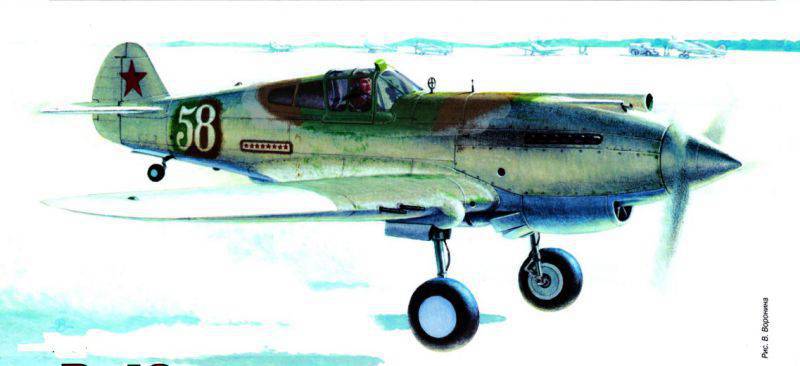
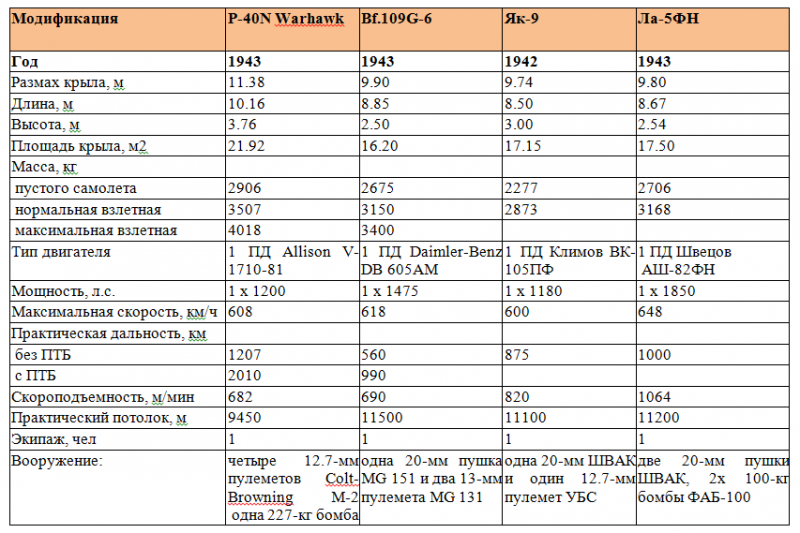
Information